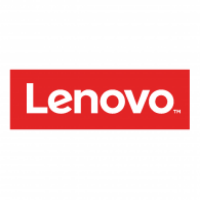
Lenovo
View Brand PublisherHere’s how Lenovo makes remote onboarding a seamless employee experience
According to a recent study titled 'Technology and the Evolving World of Work' by Lenovo, employees prefer the flexibility of working remotely.
Today, remote work is slowly becoming the norm rather than the exception. But there’s some good news. According to a recent study titled 'Technology and the Evolving World of Work' by Lenovo, employees prefer the flexibility of working remotely, with 88 percent of participants from large companies wanting to work from home (WFH) or work from anywhere (WFA) for at least some time.
Around 70 percent of global employees surveyed report higher job satisfaction and 56 percent feel more productive at home.
On the other hand, 83 percent of IT decision-makers (ITDMs) from businesses surveyed expect post-pandemic work to be remote at least half the time. Keeping this in mind, organisations need to focus on the daily technology experience of their employees to improve productivity.
The technical challenges of WFH
While remote work using technology may sound promising for employees, it comes with its fair share of challenges.
The most common ones that slow down productivity are unreliable internet connections, low-quality video calls, narrowly tailored software programs, long response time while loading apps, and uncomfortable workstations, among others.
In the same Lenovo report, 50 percent of respondents said their PC devices are out of date or inadequate, and 46 percent noted that their software frequently malfunctions and disrupts their work.
Only 33 percent were extremely satisfied with the current laptop provided by the company and 30 percent said their laptops or desktops work well for cross-collaboration. Moreover, offices have inbuilt cybersecurity protections that most people do not have in their homes.
Steps to enable better remote work experience
The impact of technology in improving the employee experience (EX), or an employee’s full journey in an organisation, is much more than anticipated. This highlights opportunities for organisations’ IT decision-makers in today’s remote and hybrid work environment.
Nearly 60 percent of IT leaders noted a 10 percent increase in EX scores by improving employee satisfaction with technology.
Here are a few ways in which businesses can enable a seamless employee experience:
1) Invest in collaboration tools
While it is important to invest in emerging technologies like 5G, AR/VR, AI, ML and so on, we all know that the one area employees spend a majority of their time on is collaborating. Doing away with legacy software like HRMS or fragmented tools like personal messenger and email, and instead investing in collaboration tools should be the priority.
From managing projects to making company-wide announcements, collaboration tools and platforms help connect better, improve communication, and boost individual and team productivity. Within these tools, new employees can join different chats and groups to integrate themselves into the fabric of the company.
2) Improving EX scores
Employee experience (EX) and your employees’ satisfaction levels are more crucial to the success of your business than you may realise. In today's environment, most employees seek new opportunities due to the lack of positive experiences in their existing workplace. EX is affected by various factors such as the physical environment, the tools and technologies employers provide, the company's commitment towards the health and success of employees, and so on.
For leaders to truly analyse EX, they need to not only focus on productivity metrics, but any daily tasks that play a part in the employees’ role. Issues such as; lack of sufficient planning or tools, and employees’ troubles with technology, keep them from achieving their goals and tasks. In turn, the overall EX gets impacted.
3) Focusing on PC devices
While WFH using software-based solutions are great, PC devices are necessary to replicate the face-to-face experience. Employees consider this critical, with 77 percent of full-time employees saying that PC devices are a critical factor in their daily work and for collaboration.
Robust hardware-based solutions pave the way for greater data security, reliability and productivity, which in turn has a positive impact on employee retention, customer satisfaction and revenue growth.
4) Empowering employee decision-making
A growing number of companies are now letting employees choose and manage their work PCs. Several studies show that employees are more productive when they have a say in the work devices they use. This is important, as employees understand their work devices’ value in driving business outcomes, based on technical factors such as performance, connectivity, reliability, portability, weight, battery life and more.
Based on their feedback, companies can also refresh features that aren't working, and improve processes.
Simplify remote work with Lenovo Managed Services
Using insights from businesses and its employees, Lenovo is improving the development of its smart technology to better empower the remote workers of tomorrow.
Lenovo offers a wide array of devices and resources to ensure employee productivity and security, outsource services and support, operate with flexibility, free up capital, and accelerate digital transformation initiatives. The array includes its Remote Workstation Solutions or WAF (work from anywhere) model to connect enterprises from anywhere, ThinkPad series and powerful desktops for high performance, OEM hardware to meet your specific business needs, VR for smart onboarding, and so on.
Onboarding employees well in a time of crisis takes a great deal more effort, but the effort will pay off when the integration strategy works and people are performing at peak efficiency from anywhere they work from.
As a small and medium business, with smarter technology and time on your side, you can focus on being productive. Check out Lenovo's ThinkPad and ThinkBook range of devices that will give your business a competitive edge in the new normal.







